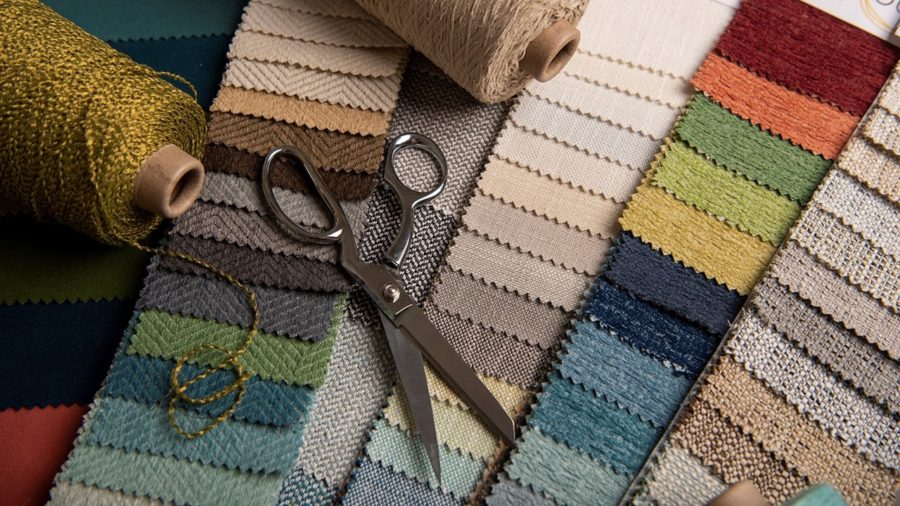
What is the most durable fabric for reupholstery?
When it comes to upholstery repair, we all think about the fabrics, which can bring us the most durable situations and the longest-living piece of furniture. However, not all fabrics can do this! In this respect, there is a kind of fabric called performance fabric. This fabric can be the most durable one and the most beloved fabric ever for our customers. In this article, we will provide all the information about this fabric including its pros and cons.
Why do people love performance fabric?
Before we start to introduce performance fabric, it is better to have a look at the reasons people love this fabric.
Many times, it happens to make your furniture untidy and dirty. These never happen on purpose. However, no matter whether it is on purpose or not, you as the user need to clean your furniture. Many fabrics used in upholstery repair are not cleanable, or if they are cleanable, the process of cleaning is as hard as possible. Sometimes, certain items require the expertise of professionals to clean. This means that either the cleaning process is too difficult for you to handle on your own, or it requires a significant investment of time and money.
In this respect, hard-wearing fabric saved you money and time. It is cleanable and this process does not take so much effort.
As for other reasons why people love performance fabric we can mention that this fabric can withstand wear and tear. Therefore, the durability of performance fabric increases. Moreover, if you face simple stains on performance fabric, you can easily use a little water and blotting to fix them.
It is also possible to make your furniture with cupcakes, coffee, or dirty paws. In these cases, you can use upholstery cleaners to get rid of the dirt.
One other reason for the reputation of performance fabric is that it can also resist abrasion over the long term. Simply put, the use of performance fabric in your furniture pieces makes it difficult to notice any signs of wear and tear. This makes performance fabric one of the best choices for high-traffic places such as restaurants.
Why did the fabric companies produce performance fabric?

The reason the companies started to produce performance fabric was to increase the durability of the fabric for outdoor uses. These companies’ customers used to use the fabrics outside. They required fabrics that were durable, easy to clean, and able to withstand outdoor weathering.
After the companies produced these fabrics, the users (even for indoor uses) understood that they can use performance fabrics for their indoor uses to increase durability. These use increases made companies produce even more variety of performance fabrics. And today, you can see a vast variety of choices between performance fabrics.
What types of performance fabrics do we have?
Performance fabrics have many different types, exactly like other fabrics. They may be chemically different from other kinds of performance fabrics, or they may have a coating, which makes these fabrics performance ones.
Performance fabrics have various traits such as water and stain resistance, durability, light fastness, and antimicrobial properties. For almost all these categories, we can find olefin, acrylic, nylon, and polyester in the fabric. In other words, the basis of performance fabrics is constructed on the mentioned materials.
Different materials used in performance fabrics can affect the final fabric’s performance. Nylon and acrylic fabrics have different features.
Performance fabric made up of olefin
- Resists moisture and mildew
- Resists chemicals
- Resists abrasion
- Resists Stains
- Washable and easy to clean
- Flat-woven fabrics, velvets, and textures designs can be achieved
- Sensitive to higher heat temperatures
- Does not need to be chemically treated to have performance traits
- Can be woven by itself or with other performance/nonperformance fibres
- Uses no Land or Water to produce
- Upcycled from petroleum production
- Easily recycled
- Quick Drying
- Low Static
- Low resistance to high heat
tough fabric made up of acrylic
- Closely resembles wool in character
- Easy to wash
- Good dimensional stability
- Resistance to chemicals
- Colourfastness and can be dyed
- Can be woven by itself or with other performance/nonperformance fibres
- Resists Shrinkage and wrinkles
- Resists mildew and insects
- Easy to Clean
- Hydrophobic (repels water)
- Static Electricity buildup due to hydrophobic properties
- Not the most abrasion-resistant fabric
- Known to pill (leaves tiny lint balls)
- It Burns easily and is difficult to extinguish
Hard-wearing fabric made up of nylon
- Resists mildew and mould
- Low resistance to light
- Low resistance to heat
- Usually treated to prevent stains
- Low absorbency
- Usually lustrous fibre – shiny
- Durable
- Elastic properties
- Picks up other colours during the wash
- Not susceptible to shrinkage
- Stain removal can be an issue
Performance fabric made up of polyester
- Durable
- Crisp yet soft to the touch
- Resists stretching and shrinkage
- Washable and dry-cleanable
- Quick-drying
- Resilient to most chemicals
- Resists abrasion
- Because of low absorbency, stain removal can be an issue
- Static and piling issues
- Blends well with other fibres
Considering the mentioned features of performance fabrics, you can choose whatever you want based on your condition. Count on Limitless upholstery experts for help and advice on repair fabrics.
